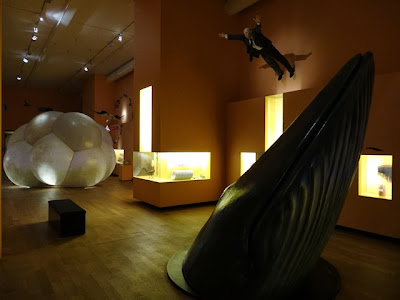The Museum has its roots in a Natural History Cabinet set up in 1694. The
official founding year is 1832, when a Museum Commission was organized in the city of Bern. In 1852 the Museum collections came into the sole property of the Burgher Community. The herbaria were separated in 1863 and housed in the Botanical Garden. The historical and ethnographic collections later went over to the Bernese Historical Museum.
Nowadays, the Natural History Museum preserves only the geological and zoological collection. The
current structure of the museum includes three academic departments (Earth
Sciences, Invertebrates, and Vertebrates), besides the library, the laboratories, the museological and pedagogical offices.
To know more about the Museum click here.
 |
| The famous dog 'Barry' gave rise to the legendary stories of rescue in the Alps and has a prominent place in the Museum. |
 |
| Large rock samples are on display in the Museum garden. |
C'est la vie - stories of life and death
The award-winning exhibition is creative, amusing and provocative. Design by the great Claude Kuhn.
 |
| There is no life without death. |
 |
| Tells of death. |
 |
| Emil Göldi is honored by the large collection of Amazonian animals that he deposited in the museum between 1898 and 1911, with over 14,000 specimens. |
 |
| Theophil Studer is also honored by the contributions given to the Museum between 1872 and 1922. | | |
 |
| High-Tech room with the sounds of many animals. |

Some teaching resources of the Museum
 |
| Who is that? |















































































No comments:
Post a Comment